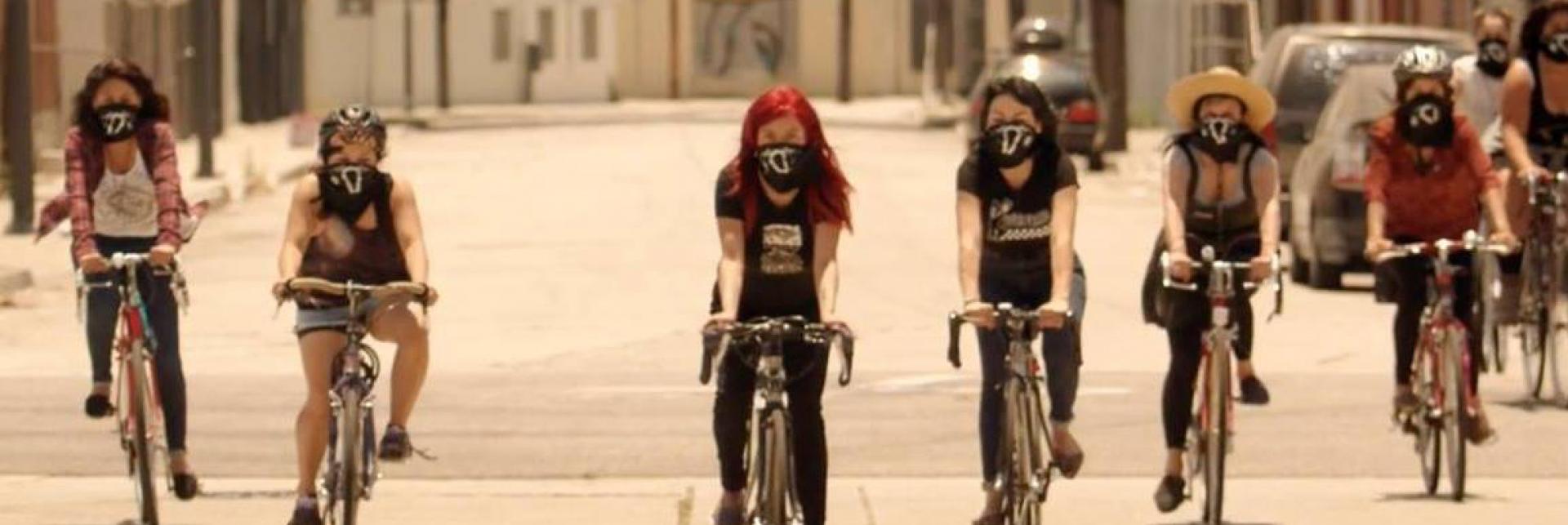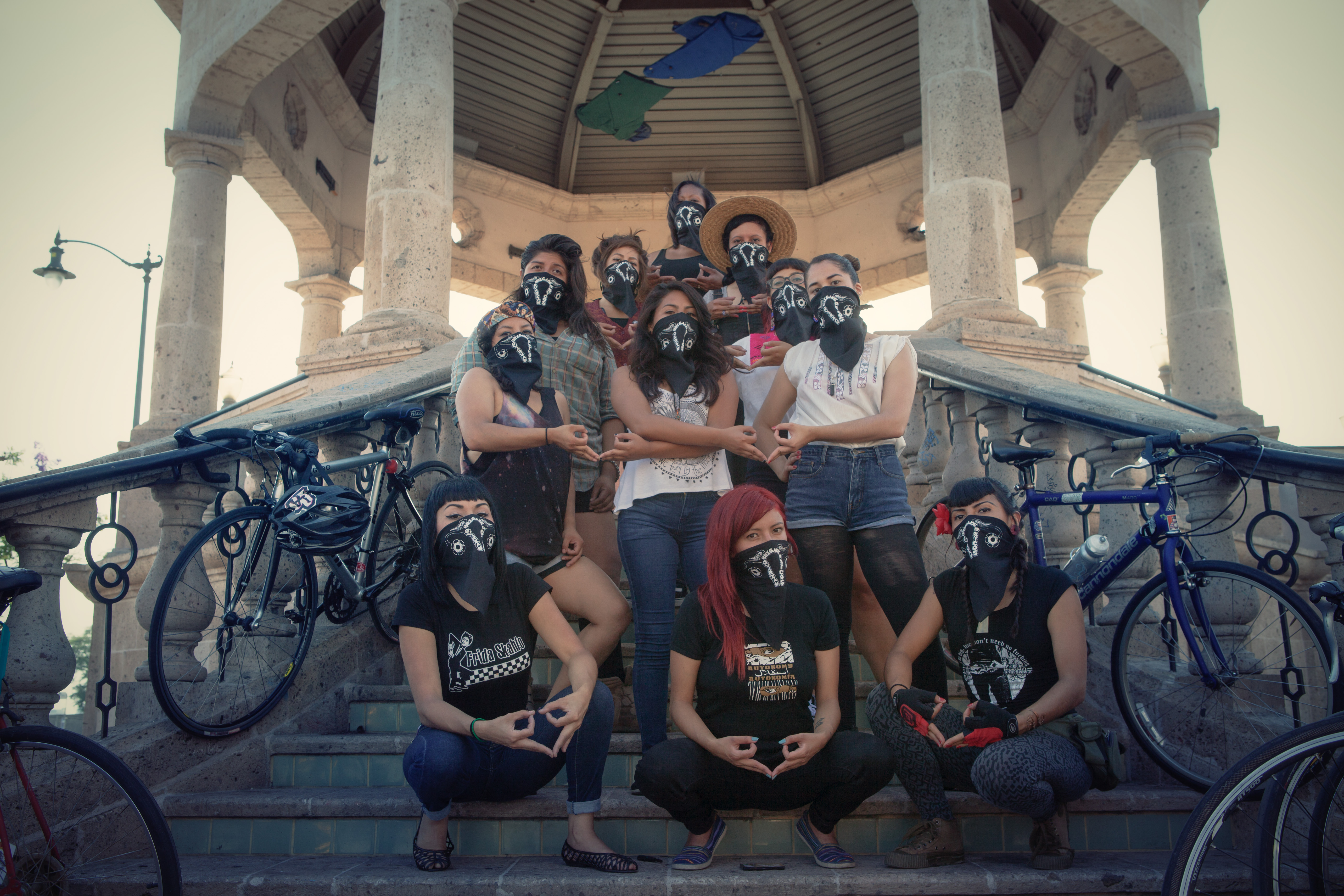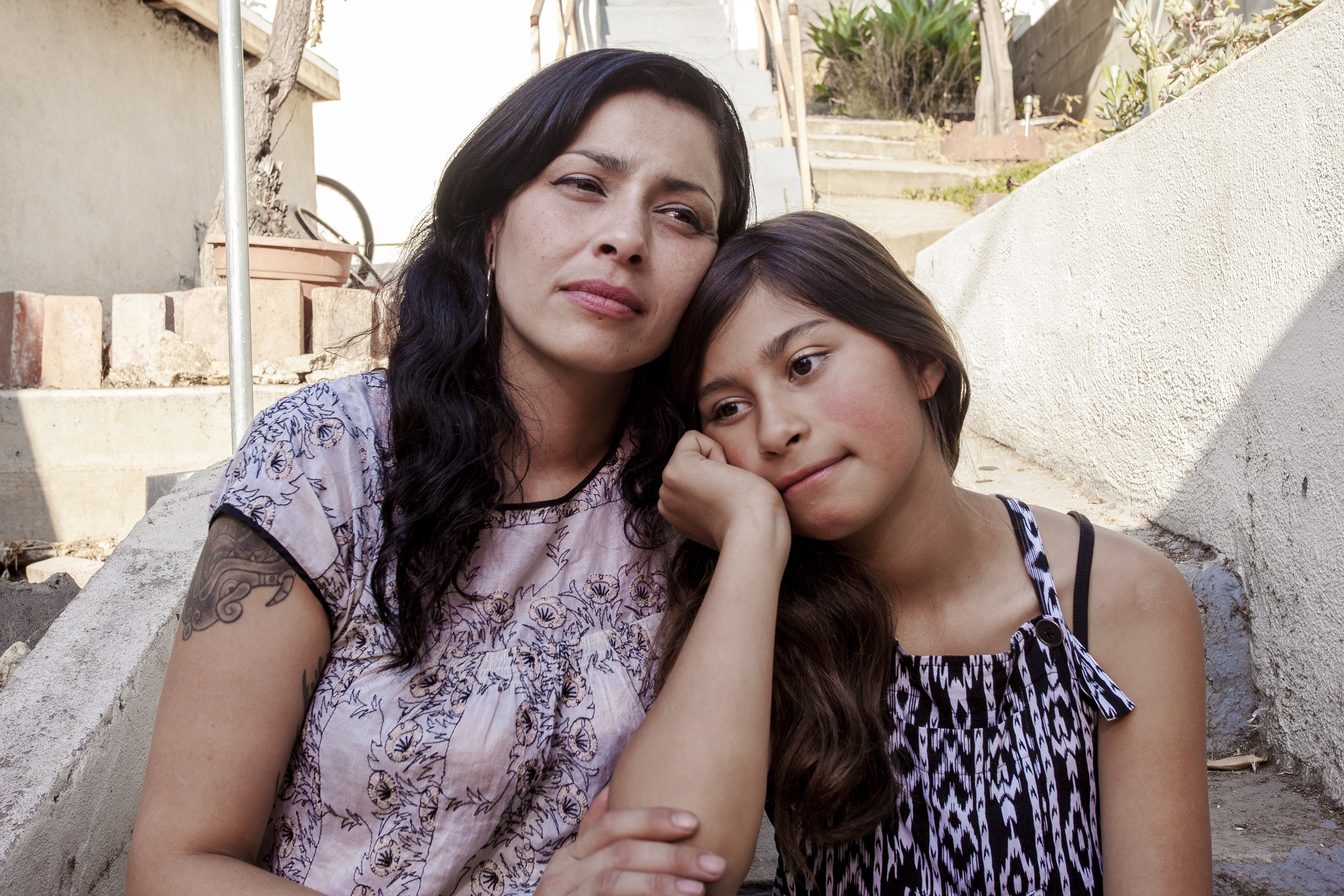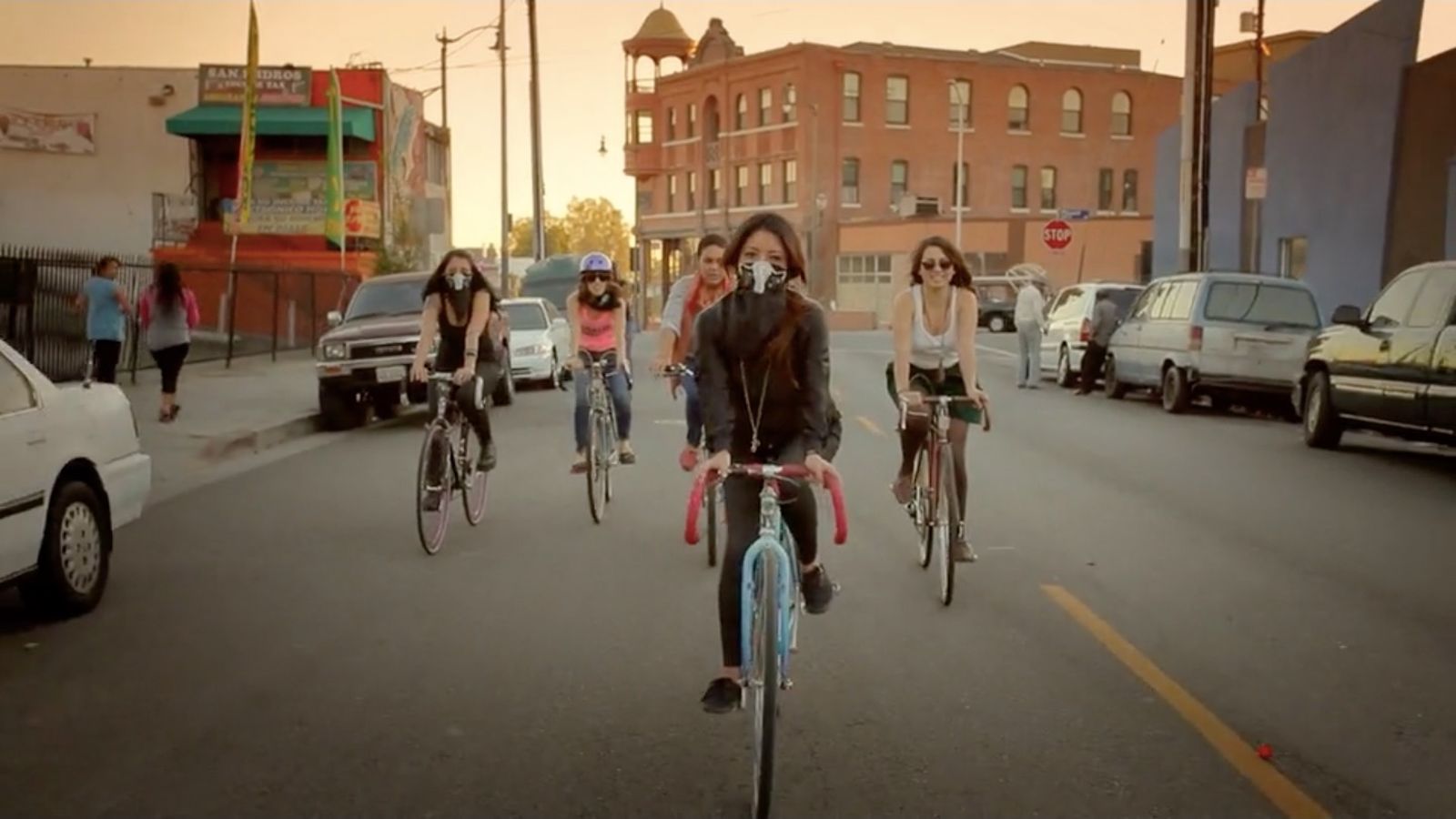In their mission statement, the Ovarian Psychos succinctly explain what they’re about:
We are an all womxn of color bicycling brigade cycling for the purpose of healing our communities physically, emotionally and spiritually by addressing pertinent issues. We envision a world where women are change agents who create and maintain holistic health in themselves and their respective communities for present and future generations.
In other words, don’t call them a “bike gang,” a dismissive term they vocally reject. (“Why are we a ‘gang,’” one member asks angrily. “Is it because we’re from the ‘hood?”) Their aims are much bigger than that.
 Joanna Sokolowski and Kate Trumbull-Lavalle’s new documentary, simply titled Ovarian Psychos (and how could they resist?), profiles this group of young womxn in East L.A., who for several years have been organizing and staging communal rides as a means of empowerment, visibility, and resistance. (I will be using the alternate spelling the group prefers.)
Joanna Sokolowski and Kate Trumbull-Lavalle’s new documentary, simply titled Ovarian Psychos (and how could they resist?), profiles this group of young womxn in East L.A., who for several years have been organizing and staging communal rides as a means of empowerment, visibility, and resistance. (I will be using the alternate spelling the group prefers.)
Ovarian Psychos is powerful, if a bit overstuffed: there’s simply a lot to talk about, at times perhaps too much all at once. But Sokolowski and Trumbull-Lavalle do an admirable job of juggling themes and working to integrate the issues in ways that mirror the intersectionality of the Psychos’ own approach.
After a brief history of how the group came together, we focus on three members: Xela, its founder and a single mom grappling with childhood trauma while trying to figure out how best to raise a daughter of her own; Andi, an artist and organizer; and Evie, a new recruit who we watch come into her own.
Xela started the group, in part, so that womxn of color in the neighborhood could meet and organize – against domestic violence (and violence against womxn more generally), against the machismo of traditional bike culture and presumptions of what constitutes appropriate “feminine behavior” in what she terms “the post-colonial Mexican family,” and for a sense of agency and empowerment for her fellow Chicanas in East L.A., birthplace of the Brown Berets and the Chicano Movement more generally.
From there, the Ovarian Psychos grew into a more wide-ranging movement, unapologetically feminist and radical in its organization. (Several other groups have taken up the mantle in other cities since.) Non-hierarchical structures and decision-making are emphasized, and connections to indigenous culture take a number of specific forms. While focused on practical planning, meetings also embody aspects of consciousness-raising sessions – personal struggles are relayed, solutions proposed, solidarity fostered. Connections between multiple forms of oppression arise.
 None of this rigor should obscure the fact that The Ovaries (speakers alternate freely between this shortening and “Psychos”) are also pretty hilarious. When they catch heat, online and off, from the usual trolls decrying their womxn-only approach as exclusionary, Andi shakes her head: “You ask ‘why can’t it be for guys, too?’ Dudes! Everything is for y’all.” Their iconography is cleverly confrontational, in a punk rock, Riot Grrl by way of hip-hop fashion: their bandanas are adorned with images of ovaries, and they wittily appropriate (and subvert) the trappings of criminal culture with ovary-evoking “gang signs.” People who are doing support work are referred to as LROs – “left and right ovaries.” There’s time for fun amid the work of building community and defending safe space.
None of this rigor should obscure the fact that The Ovaries (speakers alternate freely between this shortening and “Psychos”) are also pretty hilarious. When they catch heat, online and off, from the usual trolls decrying their womxn-only approach as exclusionary, Andi shakes her head: “You ask ‘why can’t it be for guys, too?’ Dudes! Everything is for y’all.” Their iconography is cleverly confrontational, in a punk rock, Riot Grrl by way of hip-hop fashion: their bandanas are adorned with images of ovaries, and they wittily appropriate (and subvert) the trappings of criminal culture with ovary-evoking “gang signs.” People who are doing support work are referred to as LROs – “left and right ovaries.” There’s time for fun amid the work of building community and defending safe space.
However, this is only one aspect of the Ovarian Psychos. In each of the three central threads, we also meet the protagonists’ respective families – mothers in each case (fathers are notably absent throughout). Sokolowski and Trumbull-Lavalle examine these relationships – their moms’ anxieties and hopes, their own desires for relative freedom. Traditionalist (or “post-colonial traditionalist,” to follow Xela) attitudes butt up against the young womxn’s unrepentant, slightly in-your-face approach and attitudes. In Xela’s case, there’s the struggle to be active in the community and also present for her own daughter, who she wants to raise much better, and much differently, than she herself was.
 This becomes a bit of a problem in Ovarian Psychos: it’s not an intuitively easy fit between this multitude of themes, and there’s a sense that every moment spent on one topic takes away from the time available for every other one. In a recent screening, it wasn’t revealed until the Q&A why certain locations and routes were chosen for rides — it turns out, unsurprisingly, there’s a lot of intention behind it, and it’s something you might think the filmmakers’ could’ve included in the film itself.
This becomes a bit of a problem in Ovarian Psychos: it’s not an intuitively easy fit between this multitude of themes, and there’s a sense that every moment spent on one topic takes away from the time available for every other one. In a recent screening, it wasn’t revealed until the Q&A why certain locations and routes were chosen for rides — it turns out, unsurprisingly, there’s a lot of intention behind it, and it’s something you might think the filmmakers’ could’ve included in the film itself.
Still, it works more often than not, and it’s all fascinating. In some sense, the thematic jumble is itself formally appropriate: the people we are following are also overwhelmed by the sheer amount of struggle, inter-relations, and pressures of the world they are seeking to change.
 None of these structural or narrative complaints matter much in the end, though. After all the analysis and debate, there are the rides themselves: the Ovarian Psychos setting out en masse into the streets, a moving image of sisterly solidarity, agency constructed out of trauma, and a self-created community on two wheels. It’s impossible not to cheer.
None of these structural or narrative complaints matter much in the end, though. After all the analysis and debate, there are the rides themselves: the Ovarian Psychos setting out en masse into the streets, a moving image of sisterly solidarity, agency constructed out of trauma, and a self-created community on two wheels. It’s impossible not to cheer.

